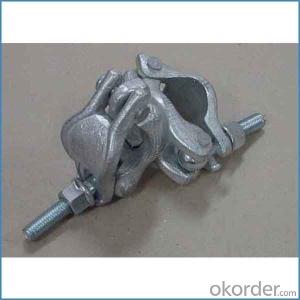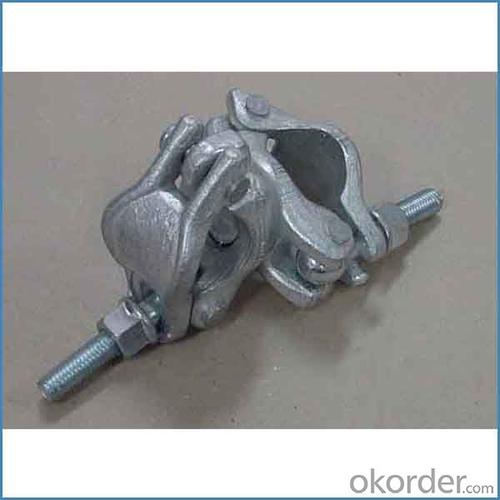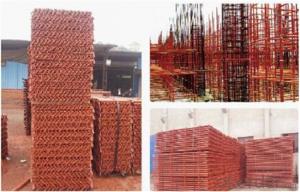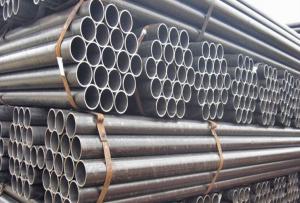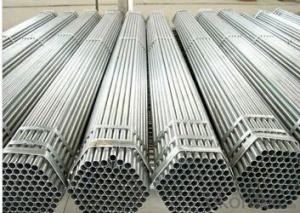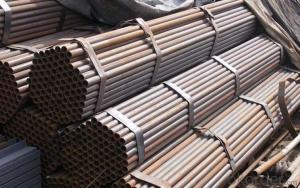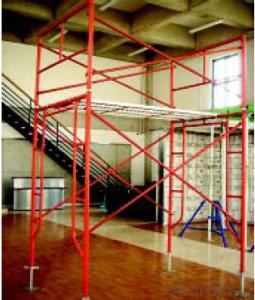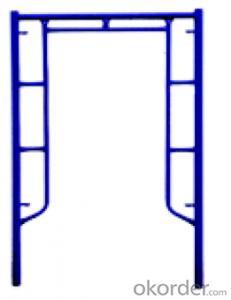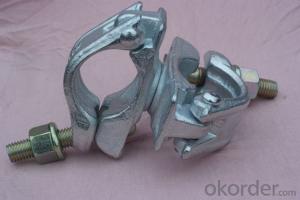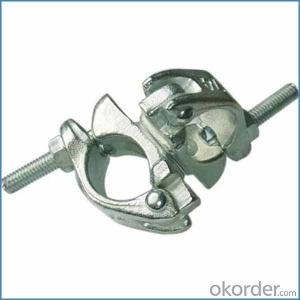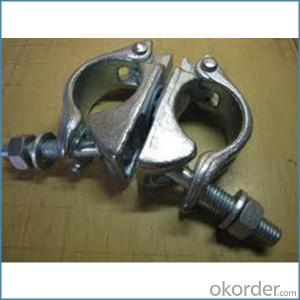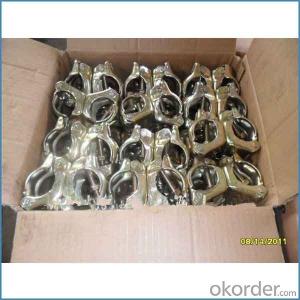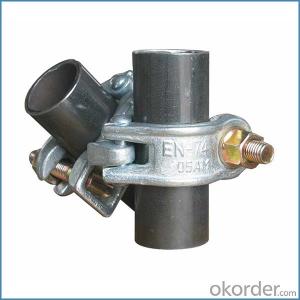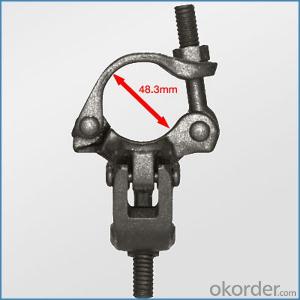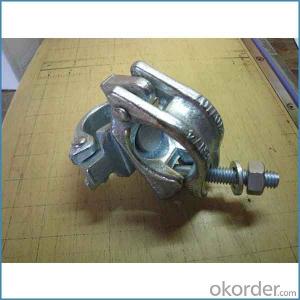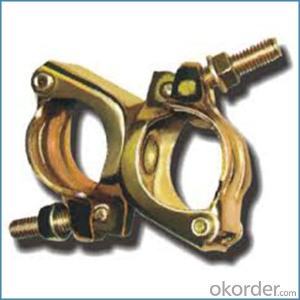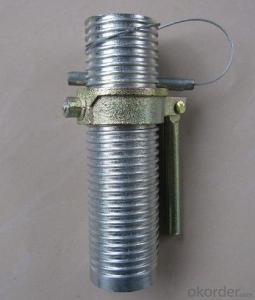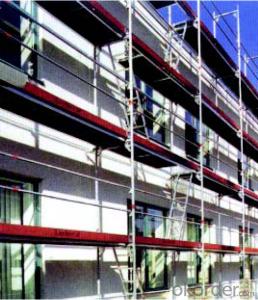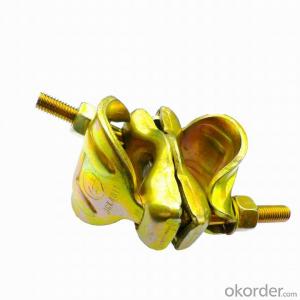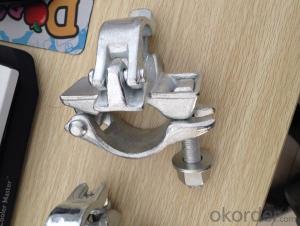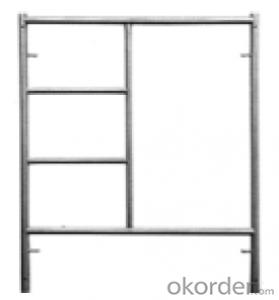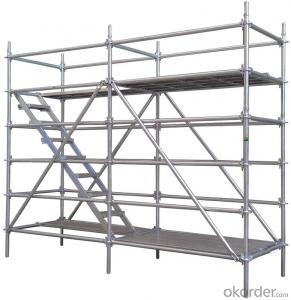32mm Steel Coupler British Type for Sale
- Loading Port:
- Tianjin
- Payment Terms:
- TT OR LC
- Min Order Qty:
- 1000 kg
- Supply Capability:
- 100000 kg/month
OKorder Service Pledge
OKorder Financial Service
You Might Also Like
32mm Steel Coupler British Type for Sale
Description
1.The scaffolding coupler is always used to connect the steel pipe as scaffolding system.
2.The often used coupler is swivel coupler and righ angle coupler .
3.We can provide types of scaffolding coupler according to your requirement.
4.Couoler can fix the 48.3mm scaffolding steel pipe tightly and make the whole scaffolding system more steadily.
5.Material:Q235 steel
6.Overall Size:48.3mm*48.3mm
7.Surface Finish: Galvanized/ Painted
8.Standard:BS1139,EN74
9.Package:25pcs/bag
10.Manufactuering as per customer requirements
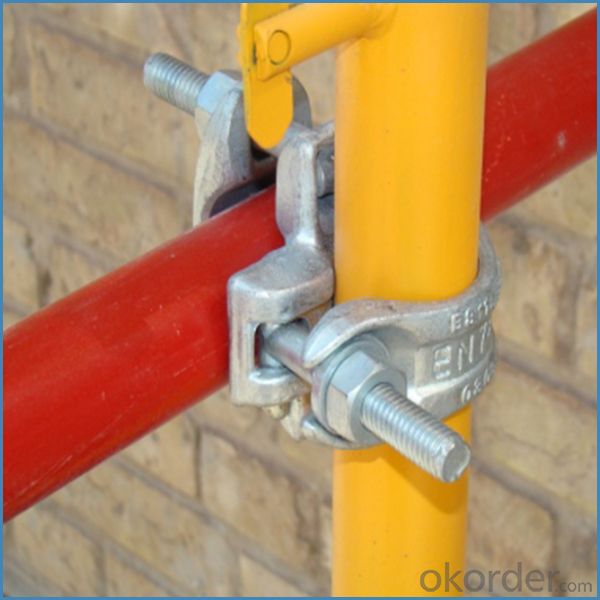
Feature
(1)Excellent Anti-Breaking—Cold Pressed Steel
(2)Outstanding Resistance Deformation
(3)Strong Anti-Dropping Ability
(4)Longtime USe
(5)Qualtity Guaranteed
(6)OEM Service
Photo
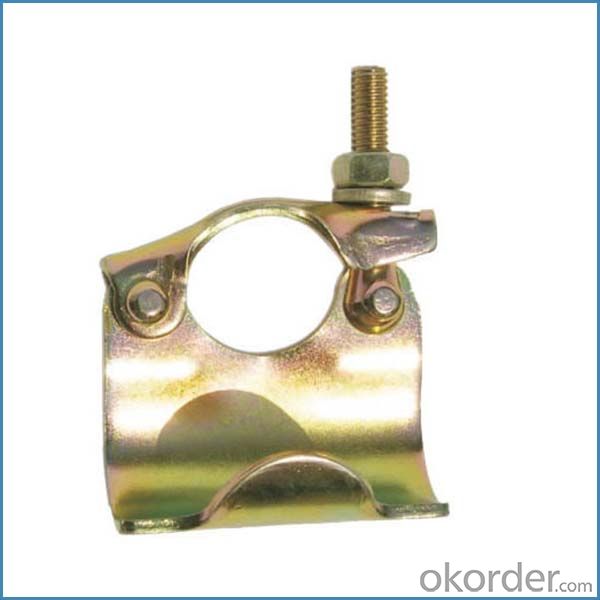
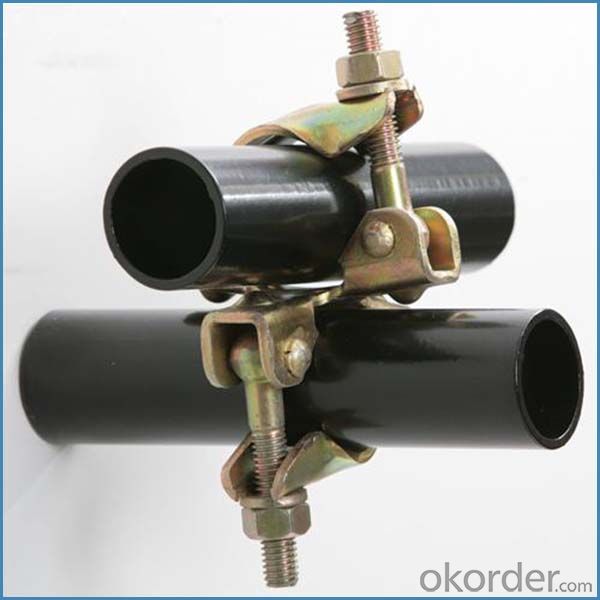
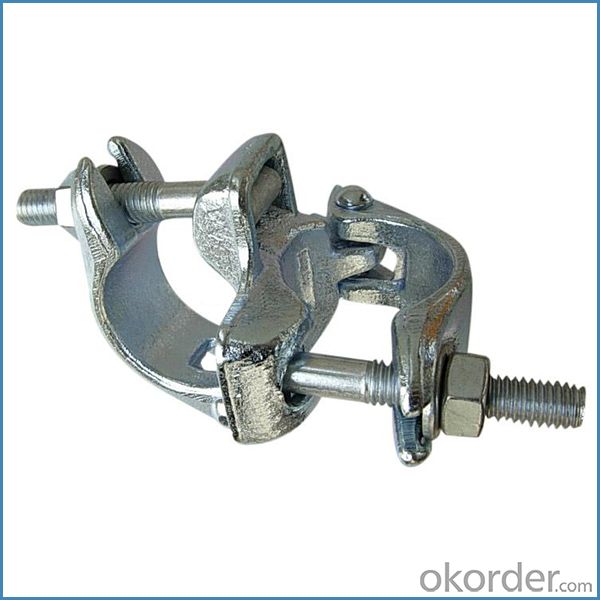
Parameter
| Material | Q235,345steel |
| Size | 48.3mm*48.3mm |
| Surface finish | Galvanized |
| Weight | 1.1kg around |
| Standard | BS1139,EN74 |
| Package | 25pcs/bag,steel pallet |
| Manufacture | As per customer requirement |
| Market | Africa, South America, the Middle East and Asia |
FAQ
Q: Are you a factory or trading company?
We are a state-owned corporation in China,dealing with various kinds of building materials.We have our holding subsidiaries.
Q: Where is your factory located? How can I visit there?
Our factory is located all around China.
Q: Can I get some samples?
Sample is free, customer only pay freight for the first time.
Q: Delivery?
10-30days. (5-15 containers)
Any question,feel free to contact us.
- Q: pictures so i could understand what it is and describe? im reading les mis...
- The scaffold was a raised platform,usually in an open,publicly accessible place (such as a town square), used for public executions.
- Q: Hi everyone, I'll keep it simple - I'm in a place with very high (25-30 foot) ceilings and therefore want to build a partial first floor to maximise use of space. Kind of an all-the-way-round mezzanine, open in the centre.However, I don't own the porperty and expect to be there 2-3 years, so wanted the cheapest solution possible, and not necessarily permanent.It's been suggested to me that a scaffolding frame might be the answer, on which I can put platforms, build stud walls etc. just as I would any normal floor, rather than going to the trouble and expense of building load-bearing wooden stud walls on the ground floor and building on top.Anyone got any experience of this / knows the pros and cons? Particularly wondering about price comparisons (for both bvuying and long-term hiring) and the potential for what I could build on my first floor (what the scaffolding can take...)Thanks! I'm in London (UK). Remember - temporary, cheap, and load-bearing
- check with owner of property i doubt if his insurance would allow such a contraption inside his building i think you should reconsider this plan sounds like you want to create a very hazardous situation
- Q: How do steel tube couplers compare to other types of scaffolding connectors in terms of cost?
- Steel tube couplers are generally more cost-effective compared to other types of scaffolding connectors. This is mainly due to their lower manufacturing costs and the abundance of steel as a construction material. Additionally, steel tube couplers are reusable, which further reduces long-term expenses.
- Q: Can steel tube couplers be used in confined space scaffolding projects?
- Yes, steel tube couplers can be used in confined space scaffolding projects. Steel tube couplers are commonly used in scaffolding systems and they provide a secure and reliable connection between steel tubes. They are particularly suitable for confined spaces where precision and stability are crucial. However, it is important to follow safety guidelines and regulations specific to confined space work when using steel tube couplers in such projects.
- Q: Bowl button scaffolding in the bowl buckle joints of what components
- See density. See the brand. Look at quality. Look color. and many more. Every line is a knowledge
- Q: Can a steel tube coupler be used to connect different sizes of scaffolding tubes?
- Yes, a steel tube coupler can be used to connect different sizes of scaffolding tubes. The coupler is designed to provide a secure and stable connection between tubes of varying sizes, ensuring the stability and structural integrity of the scaffolding system.
- Q: What are the common materials used in manufacturing steel tube couplers?
- Common materials used in manufacturing steel tube couplers include steel, stainless steel, and galvanized steel. Steel is the most widely used material for steel tube couplers due to its strength, durability, and cost-effectiveness. Stainless steel is often used for applications that require corrosion resistance or for environments with high humidity or moisture. Galvanized steel is another popular material choice, as it is coated with a layer of zinc to provide extra protection against rust and corrosion. These materials ensure that steel tube couplers are strong, reliable, and able to withstand the rigors of various industrial and construction applications.
- Q: Are there any specific guidelines for the safe use of steel tube couplers on uneven or sloped surfaces?
- When working with steel tube couplers on uneven or sloped surfaces, it is crucial to adhere to specific guidelines to ensure safety. These guidelines include: 1. Conducting a stability assessment of the area before using steel tube couplers on uneven or sloped surfaces. This assessment should evaluate ground conditions, such as soil type, erosion potential, and the presence of voids or weak spots. 2. Leveling the ground as much as possible to create a stable and safe setup. This can be achieved by filling depressions, removing loose soil, or using leveling equipment. 3. Providing additional support, such as using foundation supports like base plates or concrete footings, if the ground is significantly uneven or sloped. 4. Ensuring secure connections by tightly fastening all steel tube couplers and considering additional measures like locking pins or safety chains to prevent accidental disconnection. 5. Regularly inspecting the steel tube couplers and the surrounding area for any signs of movement, instability, or damage. Immediate action should be taken to rectify any issues or seek professional assistance if necessary. 6. Adhering to the load capacity limits specified by the manufacturer of the steel tube couplers to avoid overloading, which can compromise stability, especially on uneven or sloped surfaces. 7. Communicating and providing appropriate training to all individuals involved in the use of steel tube couplers on uneven or sloped surfaces. This ensures that everyone understands the guidelines, knows how to safely install and use the couplers, and is aware of potential risks and precautions. By following these specific guidelines, accidents or structural failures can be minimized, ensuring the safe use of steel tube couplers on uneven or sloped surfaces.
- Q: Are steel tube couplers compatible with different pipe sizes?
- Different pipe sizes are not compatible with steel tube couplers. Steel tube couplers are designed exclusively for connecting tubes or pipes that have the same size and dimensions. By doing so, they create a robust and reliable connection between the two tubes, guaranteeing structural stability and integrity. If one attempts to use a steel tube coupler with pipes of varying sizes, an improper fit will occur, which may lead to leaks, weak connections, or even structural failure. Therefore, it is crucial to utilize the appropriate size of steel tube coupler that corresponds to the size and dimensions of the pipes being connected.
- Q: Are there any specific guidelines for the safe use of steel tube couplers in scaffolding systems with fire hazards?
- Steel tube couplers used in scaffolding systems with fire hazards must adhere to specific guidelines for safe use. It is crucial to prioritize safety measures and minimize the risk of fire to protect workers. Here are some guidelines to consider: 1. Use fire-resistant materials: Utilize steel tube couplers that have been designed and manufactured with fire-resistant materials. These materials should maintain their structural integrity even at high temperatures. 2. Regular inspection and maintenance: Conduct regular inspections of the steel tube couplers to ensure they are in good working condition. Address any signs of damage immediately, such as cracks or deformations. Regular maintenance and lubrication should also be performed to prevent potential issues. 3. Ensure proper installation: Follow the manufacturer's instructions for correct installation of the steel tube couplers. Improper installation can weaken the couplers and increase the risk of failure, especially during a fire. Seek assistance from qualified personnel if needed. 4. Implement fire protection measures: Use fire-resistant coatings or wraps for the steel tube couplers, especially in areas with fire hazards. These measures can delay the spread of fire and provide additional safety for workers. 5. Provide adequate training: Ensure that all workers involved in assembly, dismantling, and use of scaffolding systems with steel tube couplers receive proper training. They should be knowledgeable about fire safety protocols, emergency evacuation procedures, and the correct use of fire extinguishers. 6. Comply with local regulations: Familiarize yourself with local regulations and codes regarding fire safety in scaffolding systems. Adhere to these guidelines to ensure compliance and minimize the risk of accidents or regulatory violations. Remember, prioritizing fire safety is crucial when working with scaffolding systems in environments with fire hazards. By following these guidelines and prioritizing safety measures, you can create a safer working environment for everyone involved.
Send your message to us
32mm Steel Coupler British Type for Sale
- Loading Port:
- Tianjin
- Payment Terms:
- TT OR LC
- Min Order Qty:
- 1000 kg
- Supply Capability:
- 100000 kg/month
OKorder Service Pledge
OKorder Financial Service
Similar products
Hot products
Hot Searches
Related keywords
